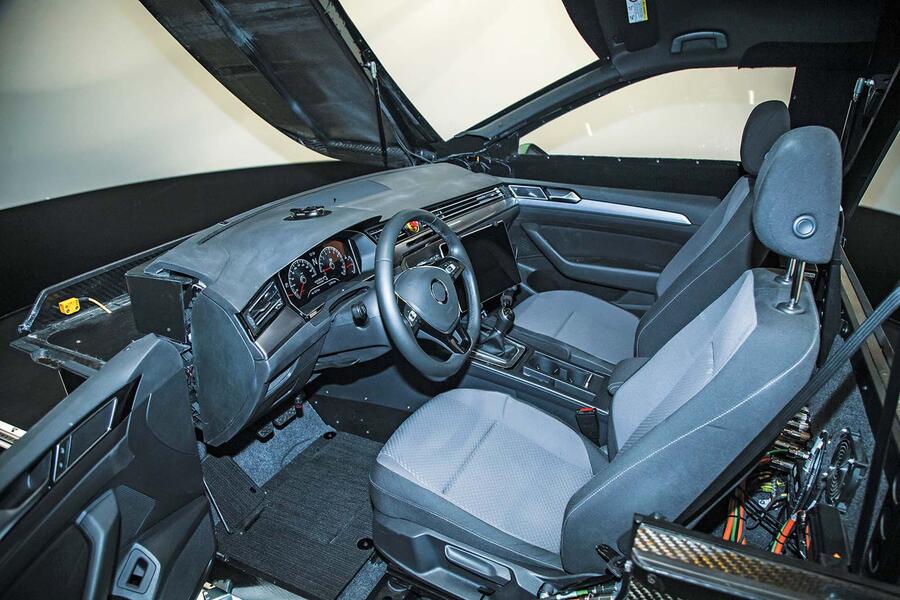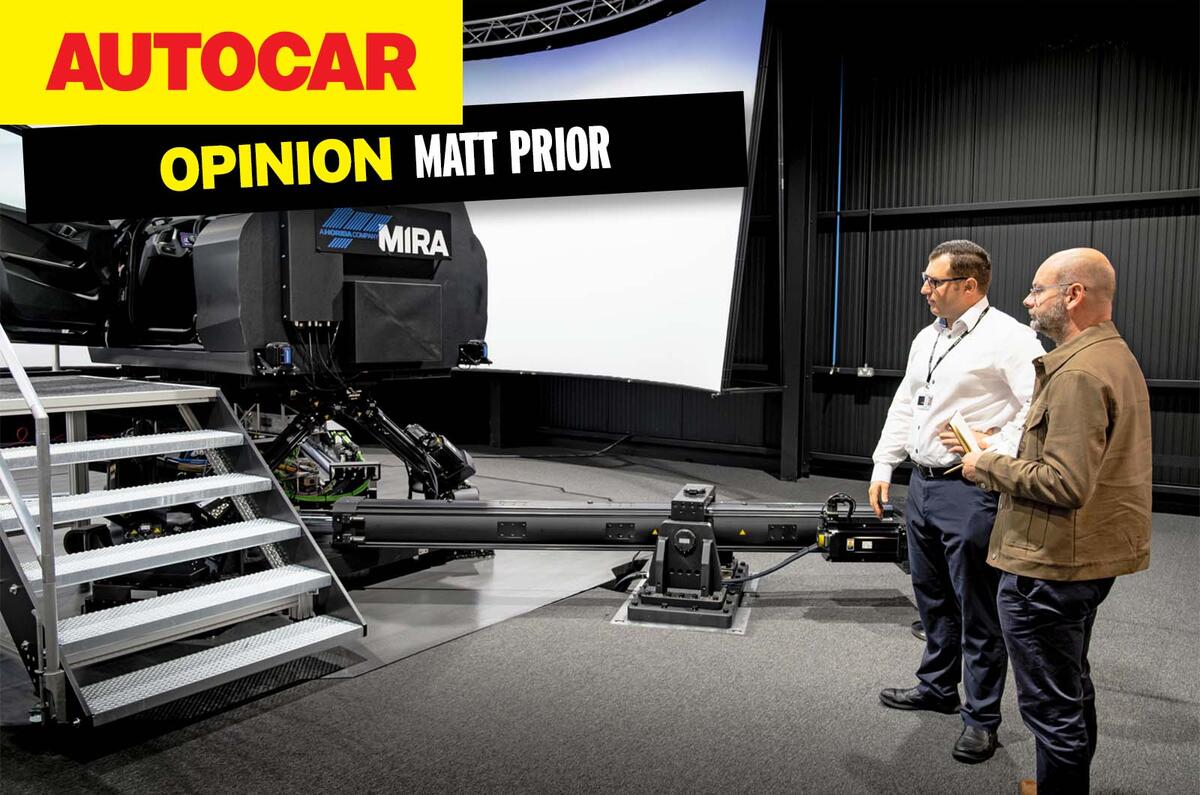I’m indebted to (and a little envious of) my colleague Richard Lane for his recent visit to the Ansible Motion simulator.
I’ve spent a good amount of time in simulators over the past decade – more than my colleagues, to the point that I’ve felt like I’m our sim correspondent.
They do have more visual impact in person than they do in photos for you, dear reader. If we drive a real prototype car, there will be shots of it on ice, in a desert or at a track, as it throws up snow or sand or is chucked sideways by a heroic test driver.
See a prototype car during simulated development and, no matter what it’s doing or where it virtually exists, it will always look like a big screen and some thick cables in a darkened room. Make that look exciting if you can. I suppose it’s like any driving.
Driving or racing is fun to do, and watching it is good too. But virtual driving? I like racing games, but they’re an acquired taste, less exciting than the real thing, so watching somebody else playing one must be even more acquired.
If actual racing is like drinking wine, watching somebody race a simulator isn’t even like watching someone else drinking wine. It’s like watching them pretend to.









Add your comment